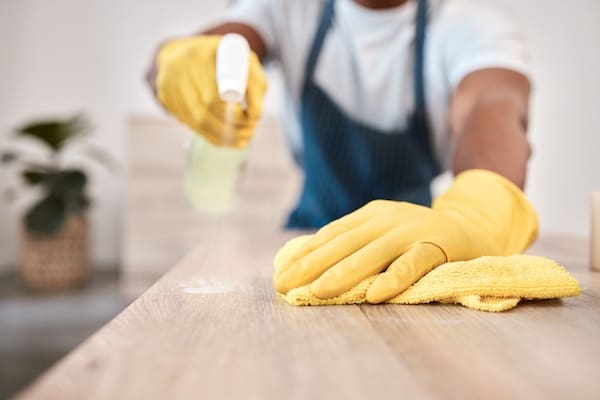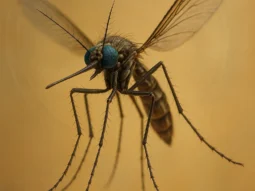
Pest Control for Offices
As you welcome your team back to the office, don't overlook the silent threat that could disrupt your business flow: pests. Ants, termites, rodents, and more aren't just nuisances; they're a serious risk to your office's health and infrastructure.
With over a century of expertise, commercial pest control solutions have evolved to meet the unique needs of office environments. It's not just about reacting to issues; it's about preventing them. Your office deserves a pest-free environment where your employees can focus on their tasks without dread.
Investing in a tailored Office Precision Protection package means safeguarding your business today and securing its future. Stay ahead of the game and ensure your office remains a productive and pest-free zone.
Importance of Commercial Pest Control for Offices
When it comes to running a successful office, the health and comfort of your employees are paramount. Unchecked pest infestations not only lead to health issues but can also severely damage your office infrastructure. Ants, termites, and rodents are more than just a nuisance; they are silent disruptors that undermine the very foundation of a productive work environment.
As your business transitions back to an in-office model, it's essential to understand the risks associated with pest infestations. Termites alone can eat through wooden structures, compromising the integrity of your office building. Rodents, known for their gnawing, can chew through electrical wires, posing fire hazards. Meanwhile, ants can contaminate food supplies and spread bacteria, threatening the well-being of your staff.
Office pest control isn't just about reacting when a problem arises. Prevention plays a key role in maintaining a healthy workplace. By keeping up with regular pest control services, you're investing in a form of insurance for your office environment. Pest control professionals are equipped to spot early signs of infestation, eliminating pests before they become an issue.
Here are some key reasons to maintain commercial pest control:
- Employee Health: Pests can carry diseases that are harmful to your staff.
- Protect Property: Prevent structural damage caused by termites and rodents.
- Save Money: Addressing issues early on can avoid costly repairs and replacements.
- Reputation Management: A pest-free office presents a positive image to clients and partners.
Maintaining a robust pest control strategy ensures that pests are kept at bay and that potential infestations are addressed promptly and effectively. This proactive approach not only safeguards your business assets but also fosters a sense of well-being among employees, which in turn, leads to increased productivity and job satisfaction. Remember, a comfortable office is a productive office.
Common Office Pests
Ants
In the office setting, you're likely to encounter ants, one of the most persistent pests. Their ability to establish multiple colonies makes them a formidable challenge in commercial environments. Ants are attracted to accessible food sources and often exploit even the smallest of entry points to invade office spaces. Places like kitchens, break rooms, and areas with sugary spills are particularly vulnerable. Regular maintenance and cleanliness go a long way, but you'll also need a comprehensive pest control plan to address their extensive networks.
Cockroaches
Cockroaches represent another pressing concern for office spaces. Notorious for their resilience and rapid reproduction, these pests can easily infest an entire office building. They gravitate towards areas that provide moisture and food remnants, which are abundant in office kitchens and waste disposal areas. Cockroaches can compromise your workplace hygiene and health standards, carrying pathogens that may lead to diseases. Ensuring cleanliness is essential, but professional extermination and preventative measures are often required to fully manage a cockroach infestation.
Rodents
Rodents, such as mice and rats, are not just a nuisance but a direct threat to both office infrastructure and health. They gnaw through wires and paperwork, potentially causing fires or data loss, and contaminate food sources, posing several health risks. Rodents can squeeze through tiny openings, making them difficult to eradicate without professional intervention. An effective pest control strategy needs to address both elimination of current populations and sealing entry points to prevent future invasions.
Flies
Flies in the office aren't just bothersome; they're also potential carriers of contaminants and pathogens. Offices with cafeteria facilities or where food is consumed at desks are particularly prone to fly problems. Waste management practices play a crucial role in controlling fly numbers, but professional pest control services are often necessary to tackle the issue effectively. A pest-free office ensures a comfortable working environment, helping to maintain staff productivity and wellness.
Signs of Pest Infestation in an Office
Visible Pest Activity
It's often your first indication of a problem – seeing pests in your workspace. If you spot ants marching across your break room counter or witness a mouse scurrying under the furniture, there's likely more lurking out of sight. Although nocturnal pests like cockroaches may only be seen after hours, daytime sightings can signal an established infestation. Unexpected pest sightings should prompt immediate attention; don't wait for the issue to escalate.
Pest Droppings
One definitive sign of an office infestation is the presence of pest droppings. Tiny brown pellets or larger droppings can be found in drawers, corners, or along walls. Rodents, in particular, leave traces of their presence through their feces and urine. If you're unfamiliar with what you're dealing with, it's wise to seek professional identification as soon as possible to begin targeted extermination measures.
Damaged Property
Pests don't just reside in your office; they can actively damage it. Be on the lookout for gnawed electrical wires, shredded paper, or damaged furniture, as these can all be tell-tale signs of rodents. Ants and termites can compromise the structural integrity of the office, while certain beetles may target any organic materials. Don't dismiss even minor damages, as they can indicate the early stages of a potentially destructive occupation by pests.
Unpleasant Odor
A clear indicator that's hard to ignore is an unpleasant odor pervading your workspace. Musty, sweet, or stale smells can often be traced back to pests. Rodents, in particular, produce a distinctive, musky scent. Larger infestations can intensify these odors, and if something smells off, it could be time to inspect for other signs of pests. An unexplained odor warrants a thorough investigation to prevent further issues.
Risks and Consequences of Office Pest Infestation
When considering the safety and wellbeing of your office, it's crucial to understand the risks and consequences that come with pest infestations. Pests are more than just a nuisance; they can lead to serious repercussions that affect every aspect of your business.
Health Risks to Employees
Your employees are your most valuable asset, and their health should always be a top priority. Pests in the office are not merely irritants; they are carriers of diseases and can significantly compromise the health of your workforce. Rodents are known to spread Hantavirus and Salmonella, while cockroaches can trigger asthma and allergies due to the allergens found in their droppings. Moreover, the presence of pests can cause employee discomfort, leading to increased absenteeism and decreased productivity.
| Common Pests | Diseases or Health Issues |
|---|---|
| Rodents | Hantavirus, Salmonella |
| Cockroaches | Allergies, Asthma triggers |
| Bed Bugs | Skin rashes, Allergic symptoms |
By ignoring the signs of infestation, you're not just risking a health code violation; you're putting your team in danger of pest-related illnesses.
Damage to Property and Infrastructure
Beyond health concerns, pests pose a significant threat to your property and infrastructure. Rodents, such as mice and rats, have a proclivity for chewing through electrical wiring, which can lead to expensive repairs and even catastrophic events like fires. Termites and carpenter ants are silent destroyers that can undermine the structural integrity of your office building. Damage from pests can require substantial outlays for repairs and can disrupt your operations while these issues are being addressed.
| Pest Types | Potential Damages |
|---|---|
| Rodents | Electrical wiring damage, Fire hazard |
| Termites & Carpenter Ants | Structural damage |
Maintaining the appearance and functionality of your office is fundamental, and by neglecting pest control, you're allowing these intruders to eat away at your investment.
Negative Impact on Business Reputation
Pests can tarnish your business reputation quicker than most crises. A single pest-related incident can invite fines from inspections and spoil the trust of your customers and prospects. Social media and online reviews have made it easier for a company's reputation to suffer instantly from negative experiences. The sight of even one pest can be enough to make your clients question the hygiene standards of your business, resulting in lost sales, reduced client trust, and difficulty attracting quality employees.
Protecting the reputation you've worked tirelessly to build is essential. Staying vigilant and implementing effective pest control measures are the keys to preventing the multifaceted impacts of office pests. Remember, it's not just about the pests you see—it's about ensuring that those you don't see aren't compromising the health and safety of your employees, the integrity of your property, or the reputation of your business.
Preventive Measures to Avoid Pest Infestation
Maintain Clean and Sanitary Conditions
Keeping your office environment clean and sanitary is crucial in preventing pest infestations. Pests are attracted to spaces where food and debris are readily available, turning unclean offices into breeding grounds for unwanted critters. It's essential to regularly clean all workspaces, including common areas and private offices. Ensure that employees are aware of the importance of cleanliness and that they maintain their own workspace accordingly. Pests like rodents and cockroaches are known to spread diseases; thus, maintaining cleanliness is imperative for your health and the well-being of your peers.
Practice Proper Waste Management
Proper waste management is another key factor in deterring pests. Garbage can provide food and shelter for pests if not handled correctly. Always dispose of garbage in a timely and proper manner. Use secure, tightly-sealed garbage cans and have a regular disposal schedule to avoid accumulation. In addition, placing garbage cans away from the main building may also help in keeping pests at bay. By denying pests access to food sources, you lower the chances of them making your office their home.
Seal Entry Points
An effective way to prevent pests from entering your office is by sealing any potential entry points. This could include the smallest of cracks and crevices around the building's exterior. Pay special attention to areas where utilities and pipes enter the office. Steps such as installing door sweeps or using caulking to seal gaps can greatly reduce the opportunities for pests to infiltrate your workplace. Keep in mind that even the tiniest opening is enough for pests like ants and mice to enter, so thoroughness is vital.
Regular Pest Inspections and Maintenance
Consistent pest inspections and maintenance are critical components of a comprehensive pest control strategy. Schedule regular inspections with a qualified pest professional who can identify risks and take proactive measures to prevent infestations. Experts can spot early signs of pest presence and can implement the appropriate preventive strategies tailored to your office's specific needs. Regular maintenance checks for structural damage and other potential pest harborage areas are also necessary to ensure a pest-free environment. Remember, early detection is key to avoiding widespread pest issues.
Commercial Pest Control Techniques for Offices
As you focus on safeguarding your office against pest infestations, it's crucial to consider a variety of commercial pest control techniques that can be implemented. These methods range from comprehensive strategies like Integrated Pest Management to more direct approaches, including chemical treatments, traps, and baits.
Integrated Pest Management (IPM)
IPM is a cornerstone of effective commercial pest control in offices. It's a strategic approach that combines various tactics to prevent pests in a way that minimizes risks to people and the environment. IPM focuses on understanding the life cycle of pests and their interaction with the environment. This information is used to manage pest damage by the most economical means, with the least possible hazard.
Here's how IPM works in an office setting:
- Identification: Spotting the pest species invading your office is the first step. This determines which management methods will be most effective.
- Monitoring: Regular check-ups are necessary to understand pest activity and detect any new infestations as early as possible.
- Prevention: This could involve changes in office cleanliness practices, repairing structures to deny pest entry points, or modifying the landscape around the building.
- Control: When necessary, safe and targeted control methods are applied to address the pest issues without extensive reliance on chemicals.
Chemical Treatments
While non-chemical methods are preferred, chemical treatments are sometimes necessary in commercial pest control. They're generally used when there's a significant infestation or when immediate action is required to prevent health hazards or structural damage.
Chemical treatments should be selected and applied by professionals who can:
- Choose the most effective products with minimal impact on humans or non-target species.
- Determine the optimal dosage and application method to maximize efficacy while minimizing risks.
- Comply with industry regulations and safety standards during application.
Remember, these treatments are often part of an IPM plan and not a standalone solution.
Traps and Baits
Traps and baits are a more visible but essential aspect of commercial pest control techniques. When used correctly, they provide an effective way to eliminate pests from an office environment.
Traps work by physically capturing pests. They range from simple sticky surfaces to more sophisticated devices designed to attract and trap specific pests.
Baits, on the other hand, attract pests with an enticing food source that contains a slow-acting pesticide. Pests ingest the bait and return to their hiding places, where they expire and are more likely to be out of sight from your employees and clients.
When employing these methods in an office:
- Placement is key—traps and baits should be placed in strategic locations where pest activity is known or suspected.
- Regular inspection and maintenance ensure that these controls continue to work effectively and adapt to changing pest patterns.
Incorporating these techniques into your commercial pest management plan can help maintain a pest-free office environment. These approaches are most effective when they're used in conjunction with regular professional inspections and tailored strategies specific to your office's needs.
Hiring Professional Pest Control Services for Offices
Choosing a Reputable Pest Control Company
When selecting a pest control service for your office, due diligence is key. You'll want to partner with a licensed and experienced team, equipped to handle the specific pest challenges of a commercial environment. A reputable company should offer eco-friendly options, flexible to your office's needs and schedules, reflecting the changing seasons and associated pest risks. Look for professionals with a solid track record; since 1989, companies with decades of experience have honed their expertise to manage infestations effectively. Don't hesitate to ask for references or case studies that demonstrate their ability to maintain a pest-free office.
Customized Pest Control Solutions
Your office is unique and so are its pest control needs. Custom solutions are not mere suggestions but crucial strategies for comprehensive pest management. Advanced technologies and a deep understanding of local pest behaviors enable pest control professionals to design an IPM approach tailored precisely for your business. From rodents to insects, a customized plan addresses each potential threat directly, using cutting-edge methods that are as unobtrusive as they are effective. Look for services that extend beyond extermination to include preventive measures, ensuring that your office maintains its professional ambiance without interruption.
Regular Maintenance and Follow-up
Consistent pest control is the cornerstone of maintaining a pest-free environment. Align yourself with a service that offers annual or seasonal plans to protect your office year-round. Regular inspections and maintenance act as a safeguard, catching potential issues before they escalate. A professional pest control company will also offer follow-up services to ensure that any treatment is successful and to adjust strategies if pest activity persists. Remember, investing in regular maintenance is not only about preventing infestations but also about preserving your office's reputation and ensuring the well-being of everyone who works within its walls.
Conclusion
Securing the right pest control services is crucial for your office's well-being and reputation. Opting for a professional team ensures that your workspace remains conducive to productivity and free from unwanted guests. Remember, a tailored approach that adapts to your specific needs will offer the most effective defense against pests. By investing in ongoing maintenance and follow-up treatments you're not just solving a current issue but safeguarding your office's future. Make the smart choice for your business and embrace a pest-free environment with confidence.
We hope you enjoy these informational articles. If you'd like to learn more about our eco-friendly pest control services, call (844) 955-2447.
Read More
Your Path to a Pest-Free Home or Business
Romex Pest Control
We are committed to protecting you, your children, and your pets with our eco-friendly, child-friendly, and pet-friendly guaranteed pest control solutions.
Romex Pest Control is fully insured and licensed in Texas, Oklahoma, Louisiana, and Mississippi.
Service Areas:
Hours
M-F 8 am–5 pm
Sat 8 am–2 pm
Sun Closed
Established 2016 © Copyright 2025 Romex Pest Control










